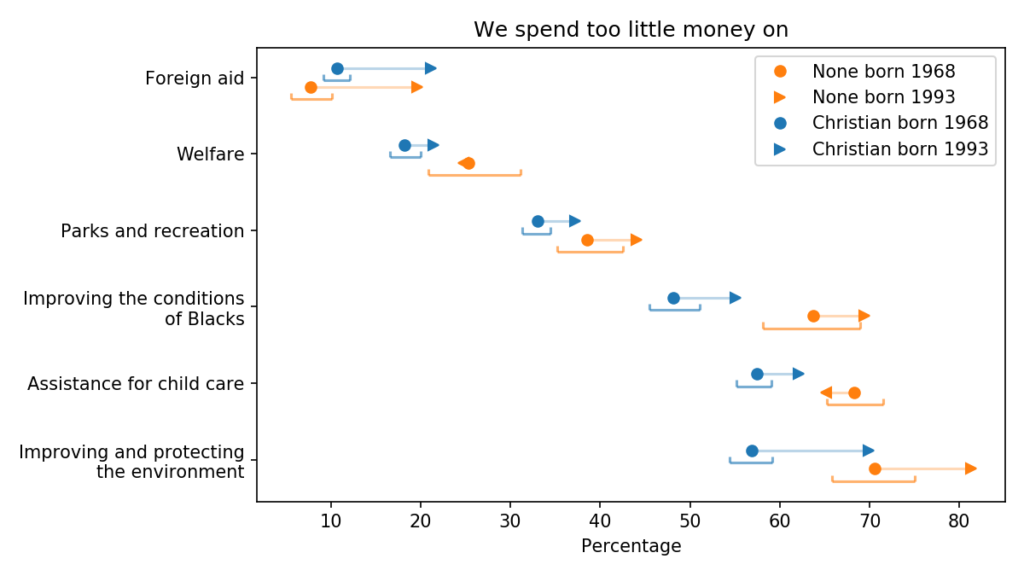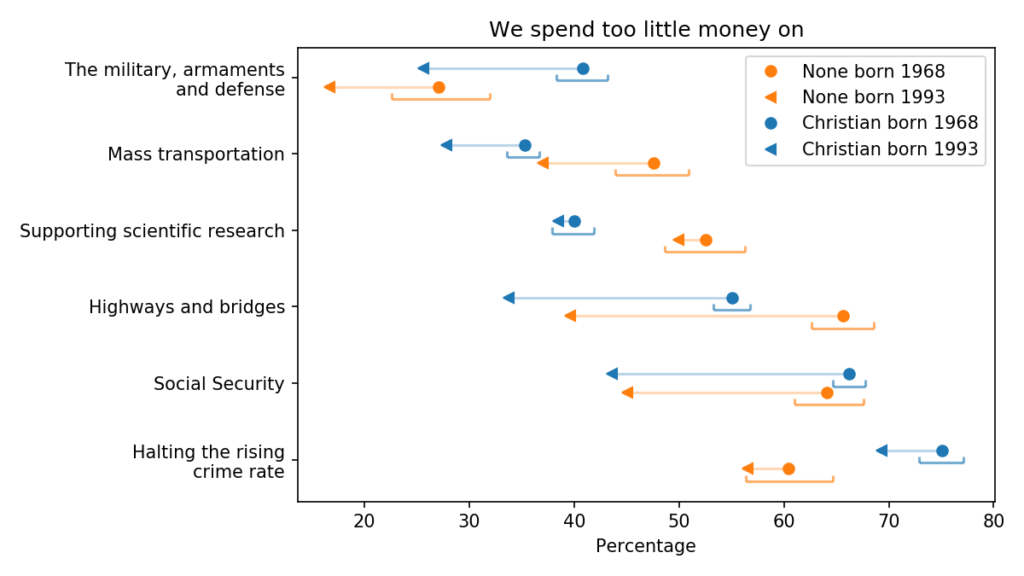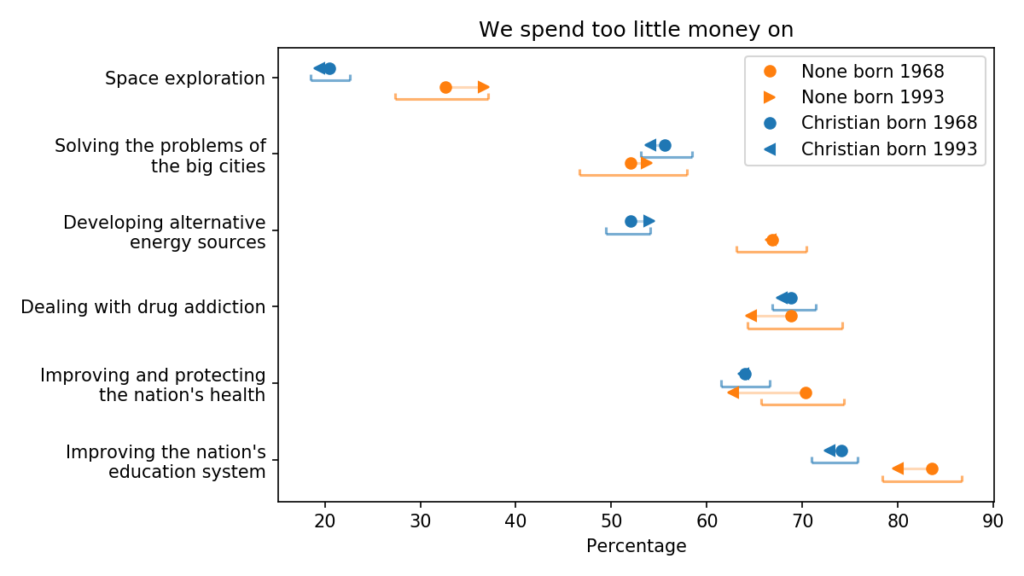Generational changes in public spending priorities
This is the fourth in a series of articles where I use data from the General Social Survey (GSS) to explore
- Differences in beliefs and attitudes between Christians and people with no religious affiliation (“Nones”),
- Generational differences between younger and older Christians, and
- Generational differences between younger and older Nones.
In the first article, I looked at changes in religious beliefs and found that younger Christians are more secular in many ways than the previous generation.
In the second article, I looked at views related to law and public policy and found that young Christians are more progressive on most issues than the previous generation.
In the third article, I found that generational differences on most questions related to abortion are small and probably not practically or statistically significant.
In this article, I use the same dataset to explore changes in opinions about public spending and national priorities. For details of the methodology, see the previous article.
Public spending priorities
GSS respondents were asked, “We are faced with many problems in this country, none of which can be solved easily or inexpensively. I’m going to name some of these problems, and for each one I’d like you to tell me whether you think we’re spending too much money on it, too little money, or about the right amount.”
Since they asked about 18 areas of public spending, I’ve put them in three categories:
- Areas where young people are more inclined to increase spending,
- Areas where young people are less inclined to increase spending, and
- Areas where generational differences are inconsistent or small.
The following figure shows the first group, areas where young people are more likely to say we spend too little:

The blue markers are for people whose religious preference is Catholic, Protestant, or Christian; the orange markers are for people with no religious affiliation.
For each group, the circles show estimated percentages for people born in 1968; the arrowheads show percentages for people born in 1993.
For both groups, the estimates are for 2018, when the younger group was 25 and the older group was 50. The brackets show 90% confidence intervals.
The way these questions were posed, I suspect that most respondents can’t answer them literally. Few people know how much we spend in each area, what we spend it on, or what effect it would have if we spent more.
So their answers reflect some combination of how important they consider each issue, how much they think we are spending, and how effective they imagine more government spending would be.
With those caveats, we can draw a few conclusions:
- On these issues, the priorities of Christians and Nones are generally aligned. The biggest difference between the groups is on spending to protect the environment, but a majority of both groups think we are spending too little.
- The biggest generational changes are in foreign aid and protecting the environment; on both issues, young people are substantially more inclined to increase spending. But with respect to foreign aid, it is still a small minority.
The following figure shows areas of public spending where the generational change is generally negative:

Compared to their parents’ generation, young people are substantially less likely to increase spending on the military, transportation infrastructure and Social Security. To me, the direction of those changes is not surprising, but the magnitude is.
The other change I find surprising is in support for mass transportation, which decreased in both groups. I double-checked the data and this result seems to be correct, but it might warrant more investigation.
Finally, the following figure shows areas of public spending where generational changes are small and unlikely to be practically or statistically significant.

On these issues, the spending priorities of Christians and Nones are generally aligned, although Nones are more inclined to increase spending on space exploration, alternative energy, and education.
In the next article, I’ll look at generational changes related to confidence in various government and private institutions.